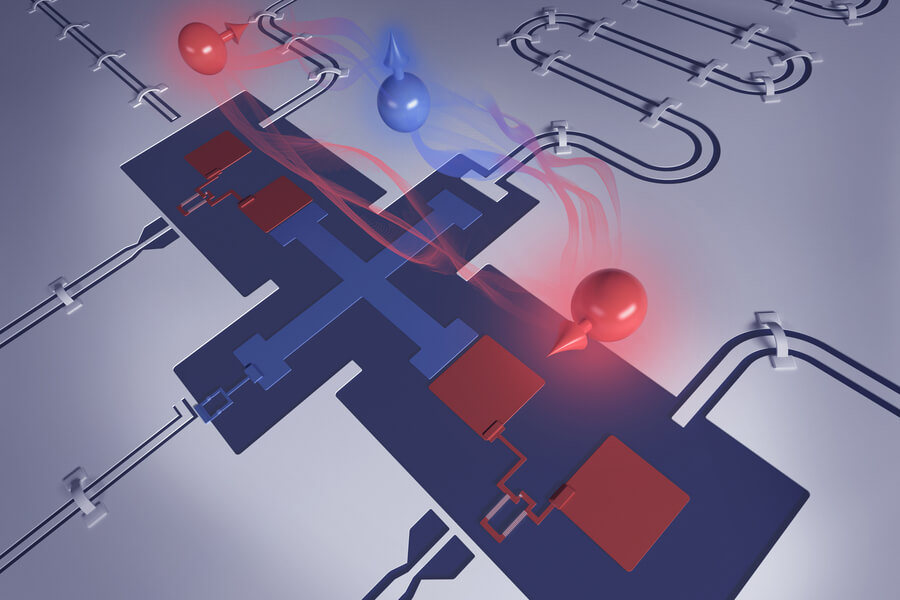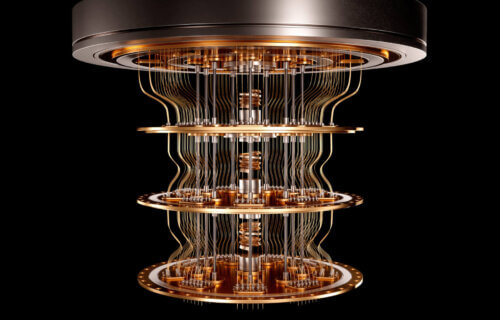CAMBRIDGE, Mass. — Researchers at MIT have achieved a significant breakthrough in quantum computing, bringing the potential of these incredible thinking machines closer to realization. Quantum computers promise to handle calculations far too complex for current supercomputers, but many hurdles remain. A primary challenge is addressing computational errors faster than they arise.
In a nutshell, quantum computers find better and quicker ways to solve problems. Scientists believe quantum technology could solve extremely complex problems in seconds, while traditional supercomputers you see today could need months or even years to crack certain codes.
What makes these next generation supercomputers different from your everyday smartphone and laptop is how they process data. Quantum computers harness the properties of quantum physics to store data and perform their functions. While traditional computers use “bits” (either a 1 or a 0) to encode information on your devices, quantum technology uses “qubits.”
These qubits can be in a state of 1, 0, or both at once, enabling more complex computations. However, they are highly susceptible to errors.

To reduce these errors, the MIT team developed a new type of “superconducting qubit” named fluxonium, which has a longer lifespan than the traditional kind. The team crafted a unique architecture involving these fluxonium qubits that can perform operations (known as gates) more accurately. Their design enabled two-qubit gates that exceeded 99.9 percent accuracy and single-qubit gates with 99.99 percent accuracy.
“Building a large-scale quantum computer starts with robust qubits and gates. We showed a highly promising two-qubit system and laid out its many advantages for scaling. Our next step is to increase the number of qubits,” says study lead author Dr. Leon Ding PhD ’23, who was a physics graduate student in the Engineering Quantum Systems (EQuS) group, in a university release.
To give a comparison, in classical computing, a gate would be an operation performed on bits. In quantum computing, a gate would be a logical operation on one or two qubits. Achieving higher accuracy in these operations is essential as errors in quantum systems can multiply quickly, leading to system failures.
For years, the primary focus in quantum research was on a type of qubit known as “transmon.” The newer fluxonium qubits boast a longer working lifespan, which means they can run algorithms for extended periods without losing data. This longer lifespan has led to the MIT team’s development of high-accuracy gates.
Dr. Ding explained that their novel architecture connects two fluxonium qubits using a system that prevents unwanted background noise, which can introduce errors. This system has shown promise in keeping background interactions to a minimum.
“The longer a qubit lives, the higher fidelity the operations it tends to promote,” says Dr. Ding. “These two numbers are tied together. But it has been unclear, even when fluxonium qubits themselves perform quite well, if you can perform good gates on them.”

Drawing an analogy, senior researcher William Oliver, likened working with low-quality qubits to “trying to perform a task with a room full of kindergartners.”
“That’s a lot of chaos, and adding more kindergartners won’t make it better,” notes Oliver. “However, several mature graduate students working together leads to performance that exceeds any one of the individuals — that’s the threshold concept. While there is still much to do to build an extensible quantum computer, it starts with having high-quality quantum operations that are well above threshold.”
Following these positive results, a group from MIT has founded Atlantic Quantum, a startup aiming to use fluxonium qubits to construct a practical quantum computer for commercial use.
“These results are immediately applicable and could change the state of the entire field,” says Dr. Bharath Kannan, CEO of Atlantic Quantum. “This shows the community that there is an alternate path forward. We strongly believe that this architecture, or something like this using fluxonium qubits, shows great promise in terms of actually building a useful, fault-tolerant quantum computer.”
Experts in the field, such as Chunqing Deng from Alibaba’s global research institution, have hailed the MIT team’s work as a pivotal milestone.
“This work pioneers a new architecture for coupling two fluxonium qubits. The achieved gate fidelities are not only the best on record for fluxonium, but also on par with those of transmons, the currently dominating qubit. More importantly, the architecture also offers a high degree of flexibility in parameter selection, a feature essential for scaling up to a multi-qubit fluxonium processor,” says Deng.
“For those of us who believe that fluxonium is a fundamentally better qubit than transmon, this work is an exciting and affirming milestone. It will galvanize not just the development of fluxonium processors but also more generally that for qubits alternative to transmons.”
The study is published in the journal Physical Review X.
You might also be interested in:
- Best Laptops For 2023: Top 5 Computers Most Recommended By Experts
- Best Colleges For Computer Science In 2023: Top 5 Schools According To Experts
- Work with computers? You’re wasting more time than you think just solving tech problems


Does that mean they have finally built a Flux Capacitor to connect the qubits??
D wave systems QBTS IS ALREADY DOING THIS. Buy some shares
What ?????????
I just want to point it that it’s not an error of distortion as much as it is a move towards a motonless state. A move towards 0-point energy and integration of large language models. A way to understand it is to take biased beliefs to nonbias beyond language understandable by normal human thought. Then back to bias understanding through logic. It’s a combination of large language models and the use of infinite-dimensional space. A formula that also defies logic. The uncertainty principle breaks down without motion at the atomic level of matter. But at zero-point energy, there is still a fluctuation of measurable energy yet that energy fluctuates in and out of existence until measured. What constitutes measurement is observation. Observation and observer. But beyond measure is one and unmeasurable through today’s meteorology. One is where both subject and object are the same. It is a universal state that is known to be beyond time and space. When past present and future become one you have instantaneous creation in every moment. It’s an experiential state where all information is an eternal record.